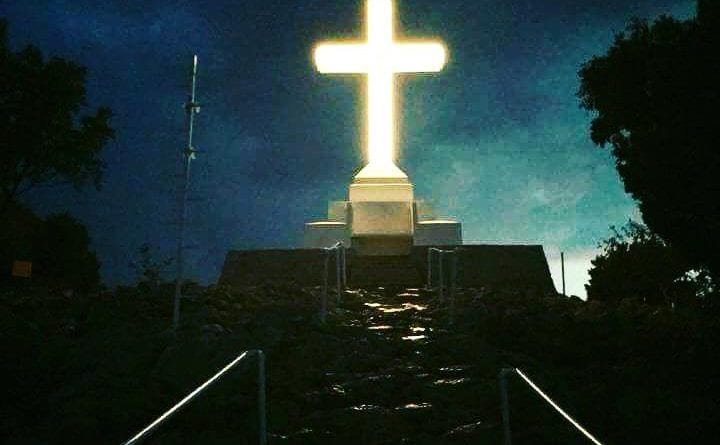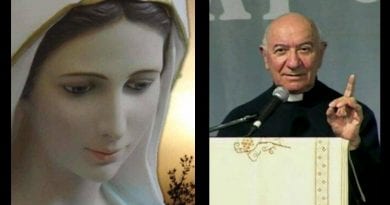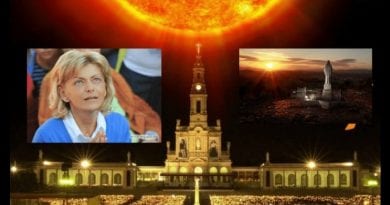Medjugorje. The blessed and little known history of the great cross overlooking Mount Krizevac
Križevac, together with Podbrdo and the parish church dedicated to Saint James, is one of the three fundamental points of devotion for every Catholic who goes on pilgrimage to Medjugorje. On the top of the hill a monumental cross was built, 8.5 meters high and 3.5 meters wide, in honor of the Holy Year of Redemption 1933-’34, by the parishioners of Medjugorje.
The construction of the cross began in 1933 and was completed in 1934, and from that year the mountain Šipovac was named precisely Mount Križevac, Mount of the Cross. It seems that one of the reasons that led the population to erect the cross were heavy rains that threatened the crops, for which the pastor of the time, Bernardin Smoljan, pushed the parishioners, despite their poverty, to build the cross in memory of 1900 years after the death of Christ.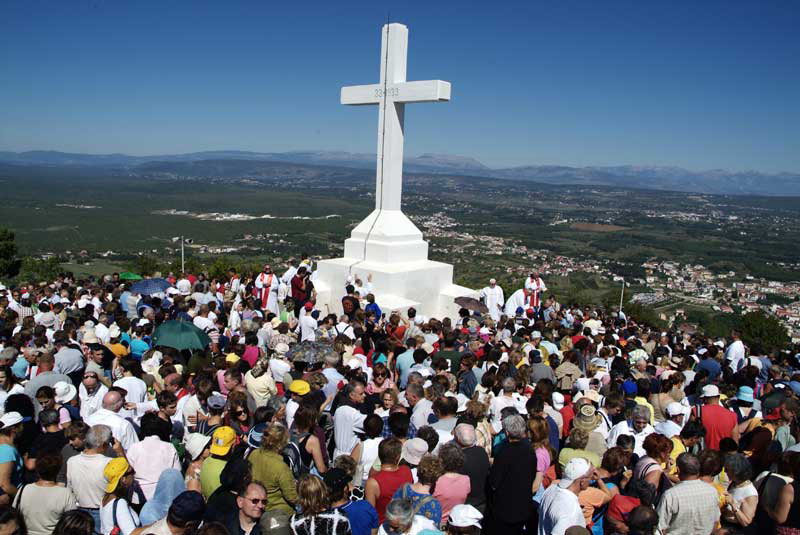
Some relics of the true Cross of Jesus, received from Rome for the occasion, were placed in the auction of the cross itself.
On March 16, 1934, the first Holy Mass was celebrated at the foot of the cross. In September 1935, Bishop Alojzije Mišić ordered that the Feast of the Exaltation of the Holy Cross be celebrated in Medjugorje on the first Sunday after the Feast of the Nativity of Mary, and that Mass was celebrated on Križevac. In fact, on September 14th, the Church celebrates the feast of the Exaltation of the Cross, that is the discovery, according to tradition, in the year 320. On that day the bishop of Jerusalem exalted, raised, the cross above the people who he was gathered in prayer, so that everyone would venerate that wood where Jesus had been nailed, where he had shed his blood and died there.
Therefore, in Medjugorje, on the following Sunday, the Nativity of Mary, the feast of the Exaltation is celebrated. And if that was once the local people’s party, since the apparitions began it has become a feast for pilgrims too. We go up there, and we gather to be with Christ and among us, a Christian people.
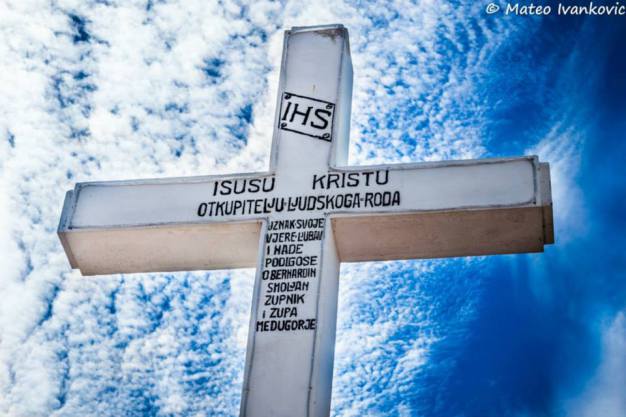
Križevac is also the name of the same Feast of the Exaltation of the Holy Cross in the Parish of Medjugorje. If until 1981 this party was for just the parishioners and friends of the neighboring villages, with the beginning of the apparitions of the Queen of Peace it became a celebration for Catholics all over the world. During the week before the day of the festival, the cross is illuminated at night with thousands of lights announcing the imminence of the party.
The large cross is made of reinforced concrete, retains within itself, as has been said, at the intersection of the vertical column with the horizontal one, a small piece of the wooden cross where Jesus was nailed. The cross that Saint Helena had sought and found. People had raised it so hard, despite the weather, despite their poverty. They put our heart into it. And every year, beginning in 1935, in September, the first Sunday following the Nativity of Mary, Holy Mass is celebrated there. It was the bishop of Mostar who allowed it.

